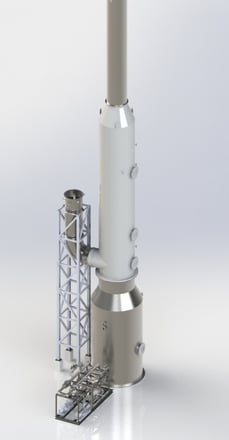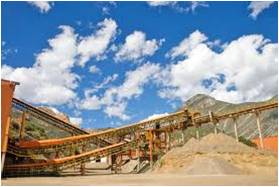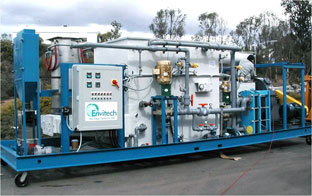For years, many states have exempted industrial facilities from rules prohibiting the release of toxic pollution during startup, shutdown, and malfunctions. That could all soon change. On May 22, 2015, the U.S. Environmental Protection Agency (EPA) finalized a rule which will force state regulators to limit industrial upset emissions. The EPA issued a state implementation plan (SIP) call action to 36 states directing them to correct specific startup, shutdown, and malfunction provisions in their SIPs to ensure they are fully consistent with the Clean Air Act (CAA). The ruling will affect a wide range of facilities including refineries, chemical manufacturers, and natural gas producers. This will create challenges for state regulators and industrial facilities and opportunities for technology providers and environmental consulting and engineering firms.
A common industrial application which may be impacted by the new rule is found in refineries for sulfur recovery units (SRU). Most SRU’s are based on a multi-step Claus process which recovers sulfur from gaseous hydrogen sulfide. The hydrogen sulfide is found in by-product gases from refining crude oil and other industrial processes. A Tail Gas Treatment Unit (TGTU) follows the SRU to recover sulfur and return it to the SRU. A TGTU can yield 99.9% sulfur recovery for a typical oil refining plant. An in cinerator and waste heat boiler treats the TGTU off-gas before it is exhausted to atmosphere. During normal operations, there is very little SO2 emissions due to the high sulfur recovery. However, TGTU upsets can occur several times per year which sends unrecovered sulfur to the incinerator. During these upsets, SO2 emissions can be as high as 1 tph or more for a period of 8 to 12 hours.Envtech is designing a refinery standby SRU tail gas caustic scrubber which will eliminate SO2 emissions during upset conditions. The scrubber uses Envitech’s proprietary quencher which acts as a low pressure drop Venturi. The quencher is followed by a packed bed absorber for SO2 removal. The overall pressure drop is less than 10 inches and has lower power consumption than other types of SRU scrubbers installed in refineries. Special design considerations enable the exhaust gas to pass through the scrubber at both elevated and cool temperatures. During normal operation, hot gas from the TGTU passes through the scrubber in standby mode with the re-circulation pumps turned off. In this mode, the gas is at elevated temperatures of 500oF to 600oF. During a trip event, the TGTU is bypassed and the recirculation pumps turn on automatically. The gases are then cooled to saturation and SO2 is absorbed and removed in the packed bed. Implementation will enable the facility to reduce SO2 emission by 40 to 80 tpy and to meet the new EPA compliance standards for start-up, shutdown, & malfunction. The scrubber is a good example of how an innovative solution can help a facility meet the new emission requirements during upset conditions with significant benefit to the environment.
cinerator and waste heat boiler treats the TGTU off-gas before it is exhausted to atmosphere. During normal operations, there is very little SO2 emissions due to the high sulfur recovery. However, TGTU upsets can occur several times per year which sends unrecovered sulfur to the incinerator. During these upsets, SO2 emissions can be as high as 1 tph or more for a period of 8 to 12 hours.Envtech is designing a refinery standby SRU tail gas caustic scrubber which will eliminate SO2 emissions during upset conditions. The scrubber uses Envitech’s proprietary quencher which acts as a low pressure drop Venturi. The quencher is followed by a packed bed absorber for SO2 removal. The overall pressure drop is less than 10 inches and has lower power consumption than other types of SRU scrubbers installed in refineries. Special design considerations enable the exhaust gas to pass through the scrubber at both elevated and cool temperatures. During normal operation, hot gas from the TGTU passes through the scrubber in standby mode with the re-circulation pumps turned off. In this mode, the gas is at elevated temperatures of 500oF to 600oF. During a trip event, the TGTU is bypassed and the recirculation pumps turn on automatically. The gases are then cooled to saturation and SO2 is absorbed and removed in the packed bed. Implementation will enable the facility to reduce SO2 emission by 40 to 80 tpy and to meet the new EPA compliance standards for start-up, shutdown, & malfunction. The scrubber is a good example of how an innovative solution can help a facility meet the new emission requirements during upset conditions with significant benefit to the environment.
To read more about the use of Envitech's scrubbers in difficult refinery applications, please download the white paper below on the topic of meeting ultra-low SO2 emissions.





 In 2012 Envitech designed and built a
In 2012 Envitech designed and built a 
 copper resources challenged by high levels of arsenic. Mining operations may incur penalties for arsenic in concentrates that exceed a certain amount. As ore with low levels of arsenic is depleted, these penalties will continue to rise.
copper resources challenged by high levels of arsenic. Mining operations may incur penalties for arsenic in concentrates that exceed a certain amount. As ore with low levels of arsenic is depleted, these penalties will continue to rise.

 from the earth’s geothermal resources into electrical energy. The fluids are recovered in the
from the earth’s geothermal resources into electrical energy. The fluids are recovered in the

 boiler for a sulfite pulp mill in Quebec, Canada. The scrubber system is part of a larger green energy project that will produce 40-megawatts of power and increase annual production capacity of specialty cellulose by 5,000 metric tonnes. The new production capacity is slated to be complete by September 2014.
boiler for a sulfite pulp mill in Quebec, Canada. The scrubber system is part of a larger green energy project that will produce 40-megawatts of power and increase annual production capacity of specialty cellulose by 5,000 metric tonnes. The new production capacity is slated to be complete by September 2014. The sulfur containing effluent is re-used in the cellulose producton process. The sulfur recovery island is followed by a gas cleaning island comprised of an
The sulfur containing effluent is re-used in the cellulose producton process. The sulfur recovery island is followed by a gas cleaning island comprised of an 

 standard. The compliance dates for these rules are fast approaching. Facilities with existing equipment must demonstrate compliance to the new standards by October 2014. Envitech is already under contract with several facilities to retro-fit existing medical waste incinerator scrubbers with add-on control equipment to meet the new standards.
standard. The compliance dates for these rules are fast approaching. Facilities with existing equipment must demonstrate compliance to the new standards by October 2014. Envitech is already under contract with several facilities to retro-fit existing medical waste incinerator scrubbers with add-on control equipment to meet the new standards.  Stack emissions must meet substantially lower limits for Cd, Pb, and Hg. In many cases, this requires add-on controls capable of greater than 90% removal of sub-micron condensed metals. Most facilities are putting on a re-heat and filter package to remove the condensed metals. A few will use wet electrostatic precipitators (WESP) which are more expensive. The ability to meet the new rules using a re-heat and filter package has been demonstrated for lead and cadmium on a commercial and industrial waste incinerator (CISWI). The WESP capability has been demonstrated for reduction of lead emission achieved at a
Stack emissions must meet substantially lower limits for Cd, Pb, and Hg. In many cases, this requires add-on controls capable of greater than 90% removal of sub-micron condensed metals. Most facilities are putting on a re-heat and filter package to remove the condensed metals. A few will use wet electrostatic precipitators (WESP) which are more expensive. The ability to meet the new rules using a re-heat and filter package has been demonstrated for lead and cadmium on a commercial and industrial waste incinerator (CISWI). The WESP capability has been demonstrated for reduction of lead emission achieved at a 





